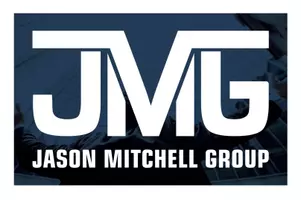Used EVs are fastest-selling cars in the U.S., Cox Automotive reports
Used electric vehicles are now the fastest-selling cars in the United States, according to new data from Cox Automotive, marking a milestone for a market that has long hovered on the edge of mainstream adoption. In August, sales of used EVs hit a record 40,960 units, a 59 percent increase compared to the same month last year. Cox’s report also showed that new EV sales set a record at 146,332 units, but grew just 17.7 percent from 2024.
The numbers highlight a shift in consumer behavior. Electric vehicles are no longer viewed solely as cutting-edge or luxury purchases. They are increasingly practical choices for everyday drivers, and buyers are showing a strong preference for the affordability of used models. According to Cox, August’s surge also gave used EVs their largest market share ever, representing 2.4 percent of all used-vehicle sales in the U.S.
Why buyers are turning to used EVs
Price is the biggest driver. While new EVs can still come with steep sticker prices, older models are entering the resale market at significantly lower costs, making them accessible to a wider audience. Many of the EVs sold over the past three years were leased, and Cox data shows those lease returns are now adding to the supply of used vehicles.
Consumers are also more confident about purchasing secondhand electric cars. Worries about battery life and expensive repairs haven’t vanished, but diagnostics and warranties are improving. Recurrent, a company that tracks EV battery health, reports that transparency tools and service programs are making buyers more comfortable with pre-owned purchases. Cox’s Manheim Used Vehicle Value Index also showed wholesale values for used EVs rising 0.8 percent in August, compared to a 0.7 percent increase for the overall used-car market — a sign that demand is outpacing supply.
Federal tax credits have further fueled demand. Buyers are eager to secure incentives that apply to certain used EVs, and analysts told Electric Cars Report that looming changes to those credits have created urgency. For price-sensitive shoppers, the combination of incentives and lower purchase prices has made used EVs far more appealing than new ones.
Meanwhile, new EV growth is showing signs of leveling off. Automakers continue to expand their lineups, and total sales remain strong, but many consumers are cautious about committing to higher monthly payments at a time of elevated interest rates. Hybrids and traditional gasoline models are still widely available, often at lower prices, which keeps new EV adoption from accelerating more quickly.
Tesla’s market share has also slipped as competition grows. Electrek reported that while the company still leads in overall EV sales, its U.S. share dropped to 38 percent in August, the lowest on record. A broader range of choices from established automakers and startups alike is pushing more shoppers into the used market, where multiple brands and models compete for attention.
Looking forward, analysts expect the used EV market to maintain its momentum. More vehicles are scheduled to come off leases, adding to inventory, and consumers who may have been waiting on the sidelines are finding compelling options. That influx could put downward pressure on prices, especially for older models with shorter ranges, but it also means buyers will have a wider selection, from compact sedans to family SUVs. Cars with stronger battery performance, faster charging capability, and transferable warranties are likely to command higher resale values.
New EV growth, by contrast, is likely to moderate once the current rush to lock in tax credits subsides. Automakers are still investing heavily, but buyers may hesitate until charging networks expand further and overall affordability improves. Policy decisions at the state and federal levels will also be critical in shaping the pace of future adoption.
For now, the August sales figures point to a pivotal moment. Used EVs have moved beyond niche status and into the mainstream, attracting buyers who once might not have considered them. The coming year will test whether this momentum is sustainable, but one thing is clear: the second life of the electric vehicle is proving every bit as important to the market as the first.
The news and editorial staffs of Southern California News Group and The San Diego Union-Tribune played no role in this post’s preparation.
Categories
Recent Posts










GET MORE INFORMATION


